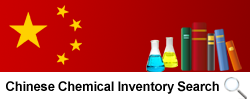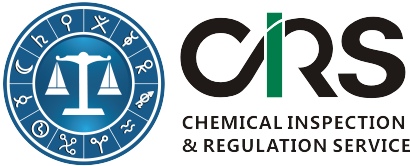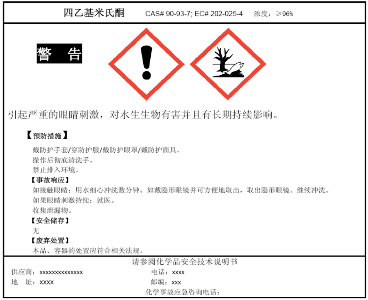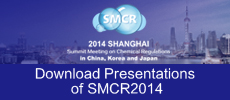
Classification, Labeling, Packaging of Chemicals and SDS in China – China GHS
Updated in Jan 2014
"Globally Harmonized System of Classification and Labeling of Chemicals (GHS)" is a system created by UN to address the classification of chemicals by types of hazard and harmonize hazard communication elements, including labels and safety data sheets. It aims at providing a basis for harmonization of rules and regulations on chemicals at national, regional and worldwide level, an important factor also for trade facilitation.
As an international agreement GHS is non-legally binding in the member countries of United Nations. Thus many countries and regions have published their own regulations or standards to implement GHS. For example, the GHS criteria were introduced into Europe via the Regulation (EC) No 1272/2008 on the Classification, Labeling and Packaging of substances and mixtures (CLP) in 2008.
China is one of many countries that have agreed to implement GHS. Chinese government has published several compulsory national standards (starting with GB) and recommended national standards (starting with GB/T) between 2008 and 2013.
Companies selling chemicals to China and chemical companies in China are required to adopt these standards to classify, label and package chemicals as well as prepare safety data sheets in accordance with the requirements of GHS as from 1 May 2011.
Classification Standards
16 Oct 2013, the Standardization Administration of the People's Republic of China (SAC) has published 28 new GHS classification standards for chemicals and the implementation date is 1st Nov 2014. The new compulsory national standards (GB 30000-2013) for chemical classifications are fully aligned with UN GHS Rev. 4 and have adopted all building blocks under UN GHS Rev. 4 including aspiration hazards and hazards to the ozone layer. They will replace current national standards GB 20576 ~ GB 20602-2006 safety rules for classification, precautionary labeling and precautionary statements of chemicals issued in 2006.
Standard GB 30000.2-29-2013 |
Name: Safety rules for classification and labelling of chemicals for |
To Replace |
GB 30000.2-2013 |
Explosives |
GB 20576-2006 |
GB 30000.3-2013 |
Flammable gases |
GB 20577-2006 |
GB 30000.4-2013 |
Aerosols |
GB 20578-2006 |
GB 30000.5-2013 |
Oxidising gases |
GB 20579-2006 |
GB 30000.6-2013 |
Gas under pressure |
GB 20580-2006 |
GB 30000.7-2013 |
Flammable liquids |
GB 20581-2006 |
GB 30000.8-2013 |
Flammable solids |
GB 20582-2006 |
GB 30000.9-2013 |
Self-reactive substances and mixtures. |
GB 20583-2006 |
GB 30000.10-2013 |
Pyrophoric liquids |
GB 20585-2006 |
GB 30000.11-2013 |
Pyrophoric solids |
GB 20586-2006 |
GB 30000.12-2013 |
Self-heating substances and mixtures |
GB 20584-2006 |
GB 30000.13-2013 |
Substances and mixtures which are in contact with water emit flammable gases |
GB 20587-2006 |
GB 30000.14-2013 |
Oxidising liquids |
GB 20589-2006 |
GB 30000.15-2013 |
Oxidising solids |
GB 20590-2006 |
GB 30000.16-2013 |
Organic peroxides |
GB 20591-2006 |
GB 30000.17-2013 |
Corrosive to metals |
GB 20588-2006 |
GB 30000.18-2013 |
Acute toxicity |
GB 20592-2006 |
GB 30000.19-2013 |
Skin corrosion/irritation |
GB 20593-2006 |
GB 30000.20-2013 |
Serious eye damage/irritation |
GB 20594-2006 |
GB 30000.21-2013 |
Respiratory or skin sensitization |
GB 20595-2006 |
GB 30000.22-2013 |
Germ cell mutagenicity |
GB 20596-2006 |
GB 30000.23-2013 |
Carcinogenicity |
GB 20597-2006 |
GB 30000.24-2013 |
Reproductive toxicity |
GB 20598-2006 |
GB 30000.25-2013 |
Specific target organ toxicity- single exposure |
GB 20599-2006 |
GB 30000.26-2013 |
Specific target organ toxicity-repeated exposure |
GB 20601-2006 |
GB 30000.27-2013 |
Aspiration Hazard |
- |
GB 30000.28-2013 |
Hazardous to the aquatic environment |
GB 20602-2006 |
GB 30000.29-2013 |
Hazardous to the ozone layer |
- |
Please note: All 28 classification standards(in Chinese) are available free of charge upon request. Please contact service@cirs-reach.com if you are interested.
GB 13690-2009 General rules for classification and hazard communication of chemicals refers to above standards and requires companies to follow them to prepare SDSs and labels.
Labeling and Packaging Standards
China released 3 national standards related to the labeling and packaging of chemical products in line with GHS in 2008 and 2009.
The first mandatory national labeling standard (GB 15258-2009) – “General rules for preparation of precautionary label for chemicals” came into force on 1 May 2010. Examples of precautionary labels, transport symbols, and precautionary statements for different categories of chemicals are given in this standard. The transition period is also between 1 May 2010 and 1 May 2011. There are some differences between this standard and CLP regulation.
- Black frame of a pictogram is also acceptable(for domestic use);
- Simplified label is available for volume < 0.1L;
- No requirement on the minimum size of a pictogram;
- There is no limit of 6 p-statements;
- Emergeny number on the label must be a domestic 24h emergency telephone number.
The second mandatory national standard (GB 190-2009) - “Packaging Labels for Dangerous goods" is based the 15th revised edition of the UN recommendations on the Transport of Dangerous Goods. This standard specifies the requirements of pictogram, label size, colour and packaging of hazardous goods. This standard also came into force on 1 May 2010.
The third labeling standard is “Labeling of Chemicals Based on GHS” (GB/T 22234-2008). Chinese government firstly published this recommended standard in 2008, which is translated from the Japanese version of <labeling of chemicals based on GHS>.
Then Chinese government realized that they need to have a mandatory labeling standard in place to implement GHS. The mandatory new standard is GB 15258-2009, which has added more features that work better for Chinese companies. Some of the features are listed as follows:
- samples of chemical labels(do not exist in GB/T 22234-2008 ) are given.
- black frame of pictogram is acceptable(for domestic use);
- simplified label is available;
- confidential ingredients do not need to be disclosed on the label;
A sample of Chinese GHS label can be found below:
Please also note that GB 13690-2009 speficially mentioned that China's GHS national standards apply to both workplace chemicals and consumer products. More information about chemical consumer products labelling can be found here.
Safety Data Sheet Standards
The most important national standard related to Safety Data Sheet (SDS) in China is "Safety data sheet for chemical products: Content and order of sections" ( GB/T 16483 -2008). This recommended standard was published in June 2008 and entered into force in February 2009. It specifies the structure, content and format of Safety Data Sheet in line with China GHS.
The other important standard is GB/T 17519-2013 Guidance on the compilation of safety data sheet for chemical products, which was issued in Sept 2013 and comes into foce on 31st Jan 2014. This recommended standard provides detailed guidelines for SDS authoring in China. More info about this standard can be found here.
Please note that 24h emergency telephone number is required for the SDSs and labels of hazardous chemicals. CIRS works with National Registration Centre of Chemicals(NRCC) to provide this service. More info can be found here.
GHS Labelling for Consumer Products in China
Most of the consumer products(excluding cosmetics) containing chemicals may not only be subject to main Chinese chemical control laws and GHS requirements, but also be subject to relevant product specific national standards and additional labeling requirements(format, content, font size etc).
Example of those consumer products include detergents, paints, fuel additives, lubricants, air freshners, adhesives, aerosol products, disinfectants and pesticides for households, etc.
Some of those product specific national standards include:
-GB/T 25322-2010 消费品安全标签Safety Label of Consumer Product
- QB/T 2952-2008 洗涤用品标识和包装要求 Requirements for detergent marks and packaging
- GB 5296.3-2008 消费品使用说明 化妆品通用标签 Instruction for use of consumer products-General labeling for cosmetics
- SH 0164-1992 石油产品包装,贮运及交货验收规则 Rules for the Packing, Storage, Transportation and Inspection upon Delivery of Petroleum products (applicable to Lubricants, industrial oils and related products )
- BB/T 0005-2010 气雾剂产品的标示、分类及术语 Labelling, classification and terms of aerosol products
- GBT 18419-2009 家用卫生杀虫用品 杀虫气雾剂 Domestic sanitary insecticidal-Aerosols
In China, GB 13690-2009 General Rule for Classification and Hazard Communication of Chemicals clearly says that the standard applies to both workplace chemicals and consumer products. However, it is not clear whether China will adopt risk-based labelling approach for consumer products in accordance with annex V of UN GHS.
However, GHS labelling for consumer products has become a trend as more countries or regions have adopted or recommended GHS labelling for consumer products(for example, EU and Japan).
More info about our label review and preparation services for consumer products can be found here.
China REACH and China GHS
In case of typical notification of new substance in China, Chinese SDS and classification based on above national standards shall be provided.
For more information about the differences between China GHS, UN GHS, and CLP regulation, please click here.
Transportation of Dangerous Goods(TDG)
China's national standards have linked TDG with UN GHS. In Oct 2011, China has released two revised national standards for dangerous goods. Those two standards are consistent with the 16th revised edition of the <UN Recommendations on the Transport of Dangerous Goods>.
Those two standards are available from:
GB 6944-2012, Classification and code of dangerous goods
Gb 12268-2012, List of dangerous goods
Our Services
- Free regulatory advice;
- New! Free chemical inventory search service;
- IECSC 2010;
- Catalog of Hazardous Chemicals;
- Catalog of Highly Toxic Chemicals;
- Prohibited Chemicals(2005);
- List of Toxic Chemicals Restricted to Be Imported/Exported
- Preparation of SDS and labels in accordance with China GHS;
- Updating/translating your SDS into Chinese;
- Label review and preparation for consumer products;
- Support to chemical classifications and labeling in China;
- 24h emergency telephone service(working with NRCC);
- Training;
Please note: Compared to other translation service providers, our price is very competitive and our knowledge with China GHS and REACH SDS allows us to translate your SDS more professionally using standard phrases.
About Us
Initially set up by China Inspection and Quarantine(CIQ) Bureau in 2007 to provide REACH compliance services to Chinese chemical industry, CIRS has grown to be a leading provider of comprehensive chemical compliance services for companies doing businesses in/with China.
Our services cover new substance notification, registration of the import and export of toxic chemicals, registration of hazardous chemicals, classification and labeling in according to China GHS, Chinese SDS, risk assessment of industrial chemicals, food additives and cosmetic ingredients. We provide one-stop solutions to your regulatory issues in China. We also deliver the most up-to-date regulatory information about chemical control laws in China.
Contact us
at service@cirs-reach.com or find more information on www.cirs-reach.com.


Watch Webinar on Youtube
More Info
Downloads
- Regulations on Safe Management of Hazardous Chemicals in China(2011)
- General rules for classification and hazard communication of chemicals(GB 13690-2009)
- General rules for preparation of precautionary label for chemicals(GB 15258-2009)
- Safety data sheet for chemical products: Content and order of sections ( GB/T 16483 -2008)
- GB/T 17519-2013 Guidance on the compilation of safety data sheet for chemical products
- A Sample Chinese GHS Label Template


